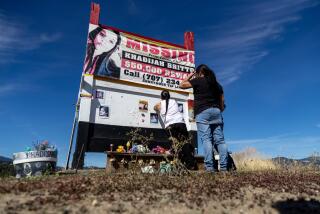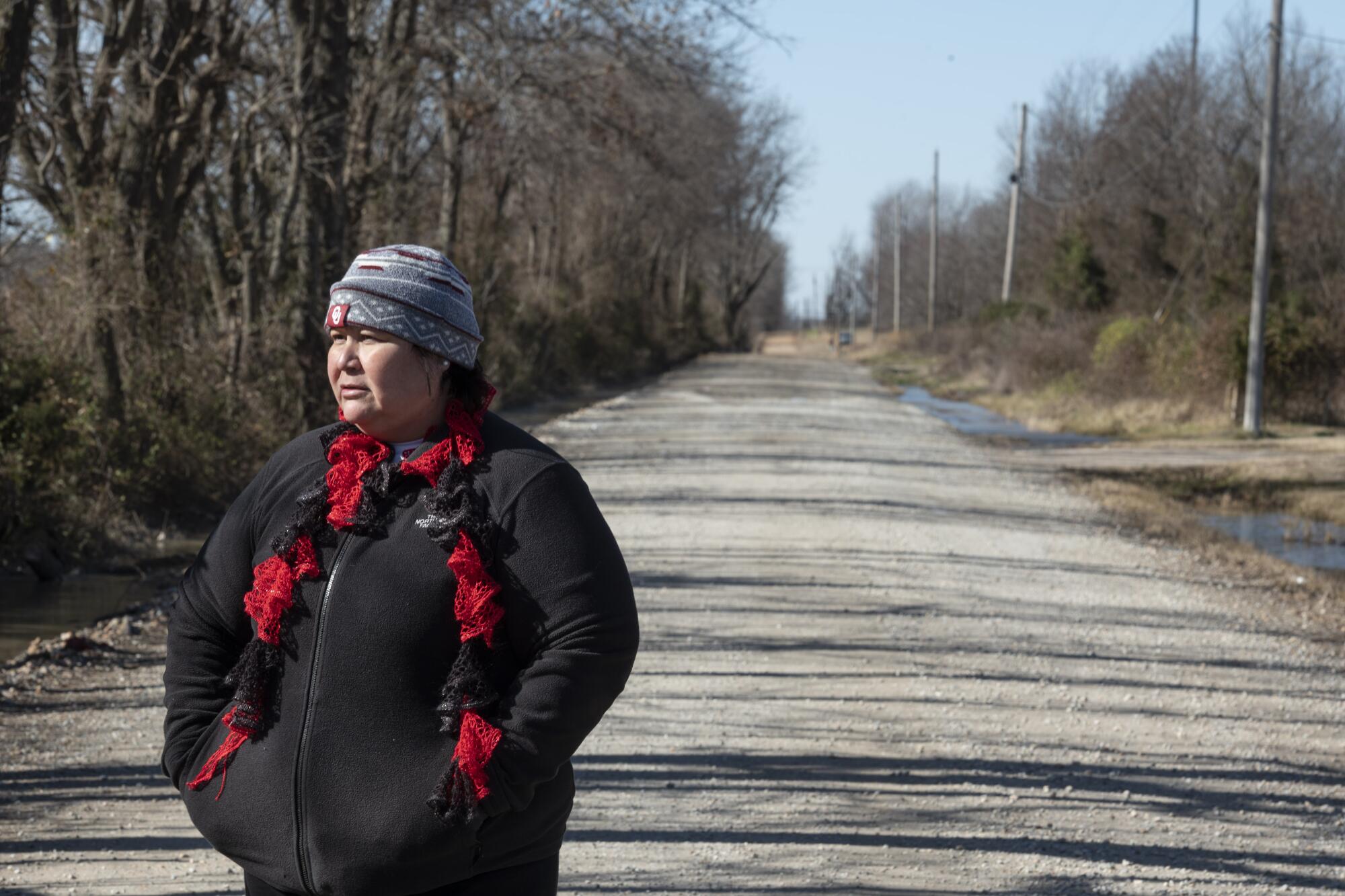
- Share via
GROVE, Okla. — The woman’s oval-shaped face, on a crinkled 8 ½-by-11-inch flier, is easy to miss.
Taped on a wall inside a gas station off Highway 59 — amid a collage of business cards for lawn care and Bible tutoring services — it reads:
Name: Aubrey Dameron
Age: 25 years old
Height: 5’10
Weight: 140 lbs
Last Seen: Grove, Oklahoma 03/09/2019
Since Dameron disappeared from her northeast Oklahoma home nearly a year ago, her aunt, Pam Smith, has plastered dozens of placards around town. She has also organized search teams to scour fields and to drain a pond. And she has repeatedly pleaded for information in Facebook posts.
But so far, nothing.
“We just want to bring her home,” Smith said on a recent morning outside the gas station. “We want answers.”
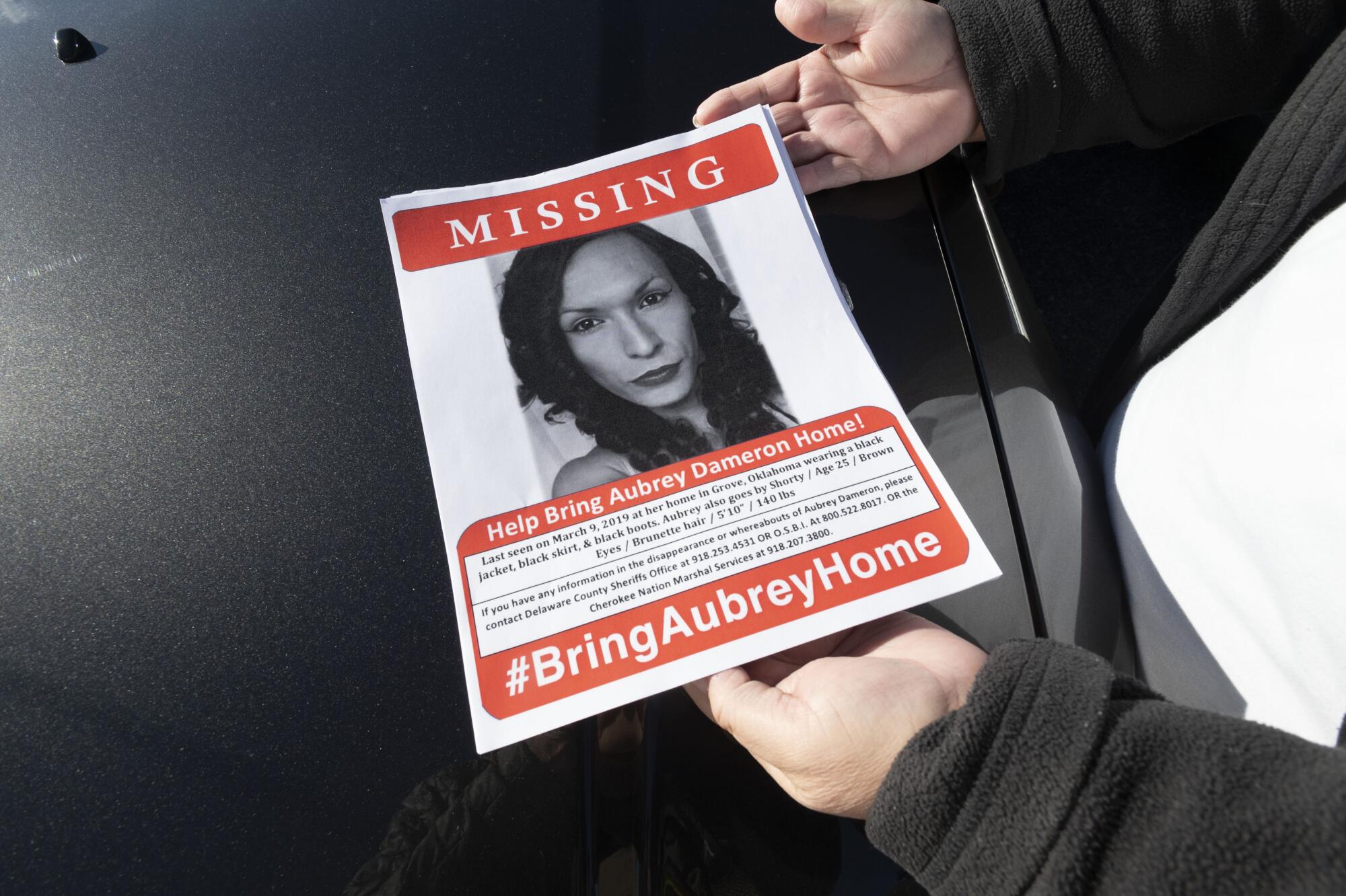
Dameron, a member of the Cherokee Nation, is one of thousands of indigenous women who have gone missing or were found murdered in recent years.
Last year alone, nearly 5,600 Native American women were reported missing, according to the FBI’s National Crime Information Center. The actual number, activists say, is probably much higher, in part because local authorities sometimes mistakenly list the victims as Latina or white.
In November, President Trump signed an executive order establishing a federal task force to explore what he termed a crisis of violence against indigenous women.
Atty. Gen. William Barr announced that $1.5 million would be targeted to hire missing-persons coordinators in U.S. attorney’s offices that handle large caseloads in Native American areas, including ones in Arizona, New Mexico and Oklahoma, and to establish better protocols for handling such cases. For years, activists and even state officials have acknowledged an inability of tribal officials and local law enforcement to work together to solve them.
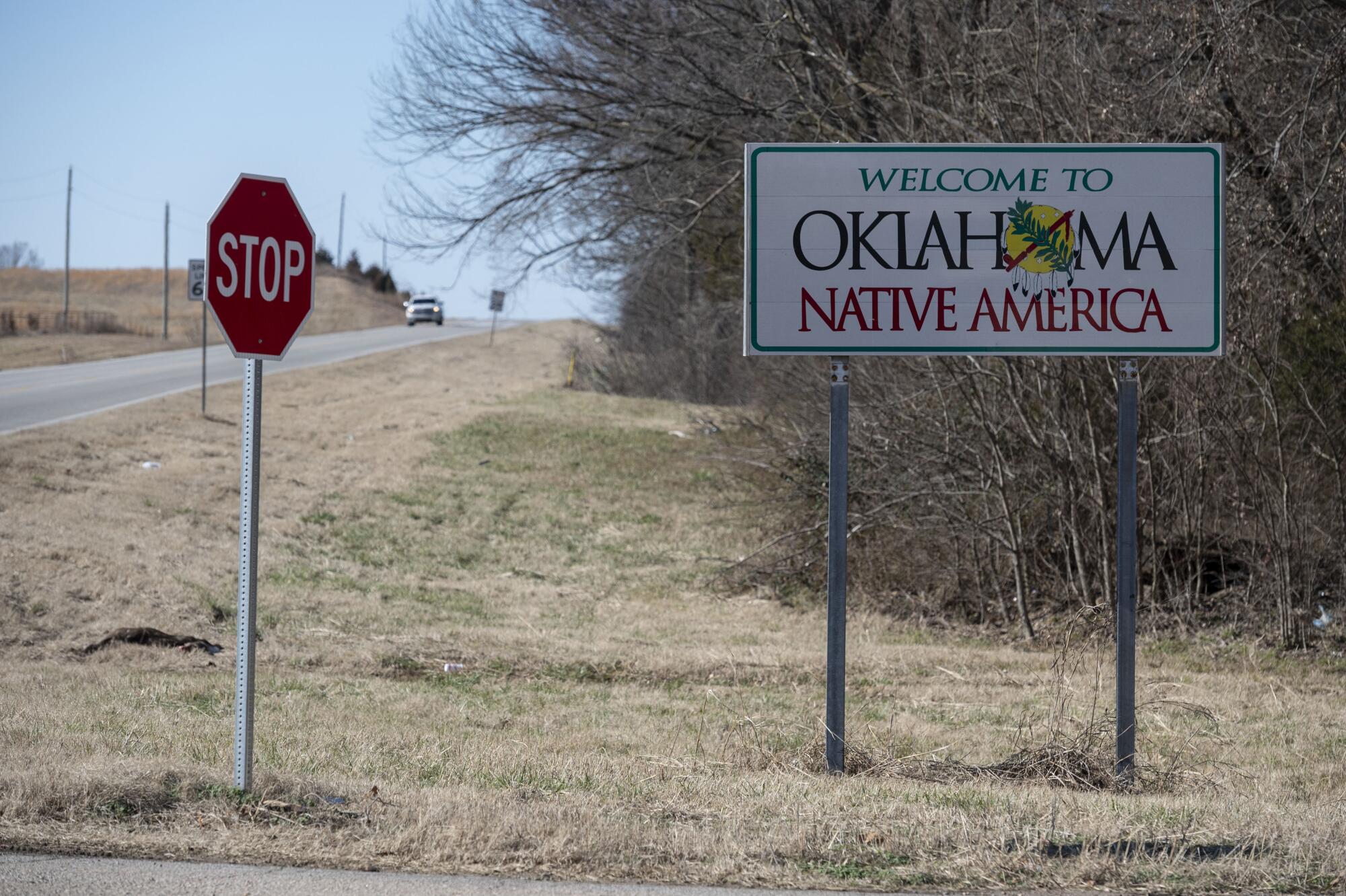
Meanwhile, federal studies have shown that in portions of the country with large Native American populations, native women are killed at a rate 10 times higher than the national average. Consequently, activists have stormed state capitols and flooded social media using #MMIW for “missing and murdered indigenous women,” to bring attention to the violence, which most frequently occurs in parts of the country from rural Alaska to the Oklahoma plains.
Annita Lucchesi, executive director of the Sovereign Bodies Institute, a group that tracks missing and murdered indigenous women, said that without better coordination, “this is never going to end and our women will continue to go missing.” The group estimates that roughly 145 indigenous women are missing or murdered in Oklahoma, the state with the sixth-highest number.
In February, state lawmakers are due to vote on a measure that, among other things, will create a state liaison office to work with tribal and federal law enforcement agencies on missing persons and homicide cases. The measure, known as Ida’s Law, is named after Ida Beard, a member of the Cheyenne and Arapaho Tribes who at the age of 29 disappeared from the Oklahoma City area in 2015 and has never been found.
LaRenda Morgan, Beard’s cousin, and Smith were among nearly a dozen relatives of missing or murdered women who testified at a committee hearing last fall in support of the law. They told stories about cherished memories, while emphasizing that they often felt ignored by law enforcement or treated as an afterthought. They talked about how this was bigger than Beard or Dameron alone.
“My cousin’s case may not be solved this month or this year ... it may never be solved, which is heartbreaking,” Morgan said, “but her case represents the movement here in Oklahoma.”
For Smith, the waiting has felt eternal. It’s been nearly a year since her niece — the one who would rush to greet her with a big kiss on the cheek — went missing.
Dameron, who went by the nickname “Shorty,” was last seen on March 9 in the gravel driveway of her single-level house outside Grove, a town of 7,000 that’s a short drive from the Missouri state line.
For Smith’s brother, Christian Fencer, their niece’s disappearance has felt like the loss of his support system. Fencer is gay and when he first told Dameron, a transgender woman, she knew just how to respond, he recalls. She knew when he wanted to talk and when he didn’t. She could flash him a knowing glance and suddenly the sting of an ignorant comment didn’t feel as deep.
“We shared everything,” he said. “She is my rock.”
In high school, when Dameron transitioned, some classmates stared at her in disdain. Businesses sometimes kicked her out for using the women’s restroom, Smith says, and there was the time she went to visit her grandfather in hospice care and a pastor offering the family support spotted Dameron wearing her favorite pair of flats.
“Don’t dress like a woman,” the pastor scoffed, telling her to throw the flats into a fireplace.
Dameron sobbed and threw the shoes away. Smith and the other family members stayed silent.
“It hurts that in that moment I did not speak up for my niece,” Smith says, adding that, despite the hardships, her niece kept smiling. She always persevered.
So now, Smith says, she’s channeling that same energy.
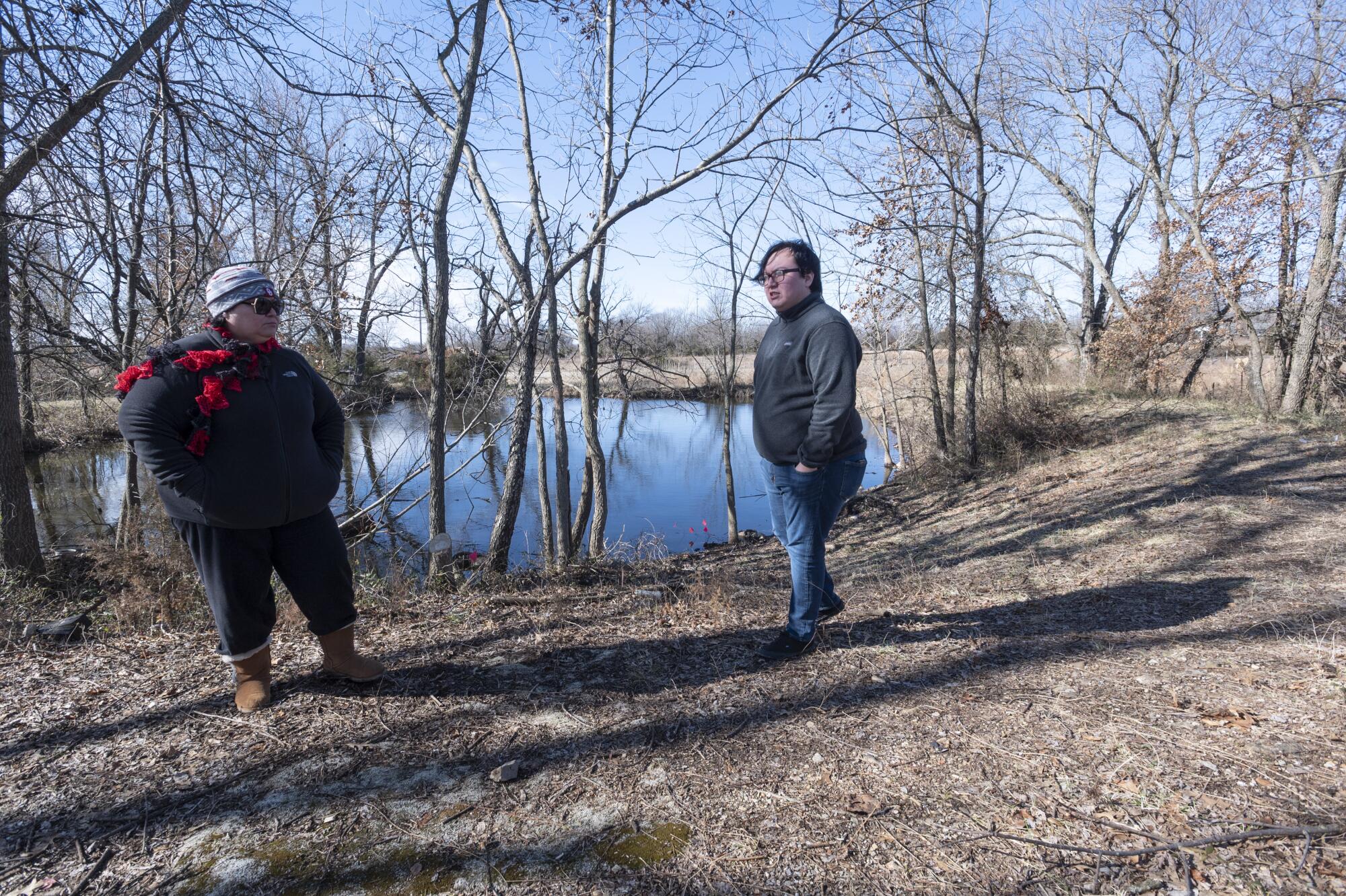
Smith and Fencer have organized volunteer search teams to scour fields and drain a pond on private property near the house where Dameron lived with her mother and stepfather, from whom Smith is now estranged.
Frustrated with the pace of the investigation — what she says has often felt like a lack of investigation — Smith has made it her business to draw attention to the case.
Local authorities here in Delaware County have tracked dozens of tips, but officials say that no suspects have been identified and Dameron’s whereabouts remain unknown. Authorities have listed Dameron as a missing person and say the investigation is ongoing as to her whereabouts.
On a recent afternoon, Smith and Fencer, who have helped create a local group that focuses on missing and murdered indigenous women, gathered at a center dedicated to LGBTQ rights in downtown Tulsa, 90 miles from Grove.
It was among the first meetings of the body, Northeast Oklahoma Indigenous Safety and Education, also known as NOISE. It consists of community members, families with murdered and missing loved ones and healthcare professionals.
People slowly trickled in. A mother with her teenage daughter. A mother whose daughter was murdered in 2016. A woman wearing a T-shirt depicting Dameron’s face.
“We pray for those missing and those who have been lost,” one member said, opening the meeting with a prayer. “Not a day can pass without keeping them in our hearts.”
The group talked about how they could help young women get out of violent situations early in life — before it’s too late.
Sitting in the meeting felt almost surreal to Smith. Her mind raced back to a year ago, when she only vaguely knew of the larger number of women missing or killed. Back before it shattered her life.
“The attention these women deserve is oftentimes lost,” she said.
Recently, Cherokee Nation officials have paid for billboards along major highways in Tulsa seeking tips and volunteer search teams say they intend to keep looking.
Smith is sure her niece would never go this long without contacting family. Her social media accounts have remained dormant since her disappearance.
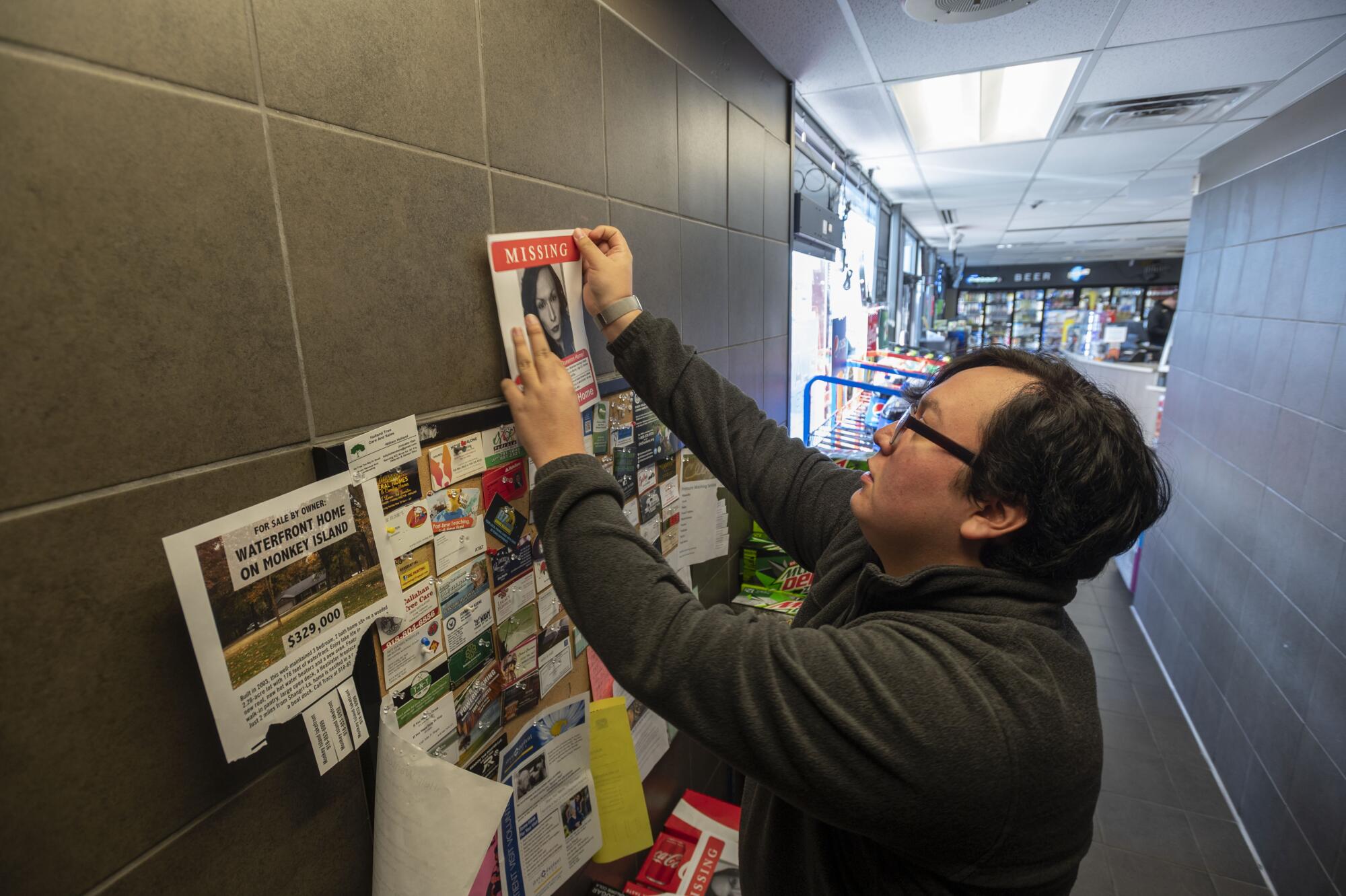
On a recent frigid morning, Smith and Fencer followed what has become a defining routine of their lives — they pulled up at a gas station with new fliers. Fencer walked inside.
“OK if I hang this poster of my missing niece? Her name is Aubrey Dameron,” he said, flashing the large text “Missing.” Dameron’s face looks straight ahead, her hair curled.
Yes, the clerk nodded.
Fencer grabbed a piece of tape, affixing the paper to the wall by the entrance.
Then, they drove down winding country roads, bordered by fields stacked with bales of hay, until they got to the gravel driveway.
Whenever they’re in Grove, they return to the spot. The place she was last seen. What if we overlooked something, they tell themselves. Maybe a piece of clothing. Or jewelry.
“We know she’s out there,” Smith said. “We just want Aubrey back.”
More to Read
Sign up for Essential California
The most important California stories and recommendations in your inbox every morning.
You may occasionally receive promotional content from the Los Angeles Times.

